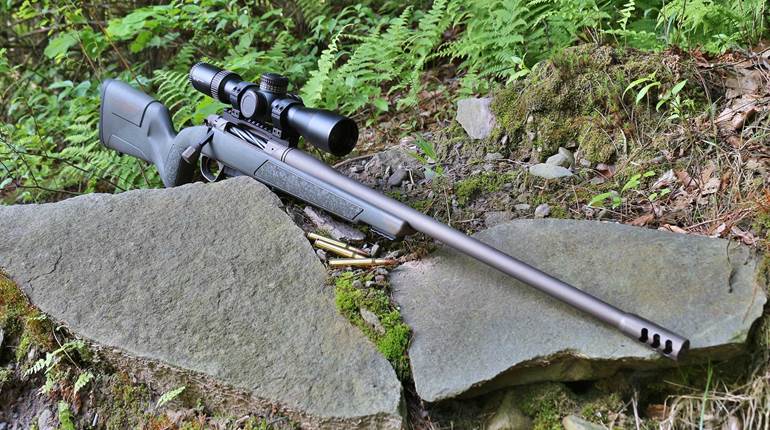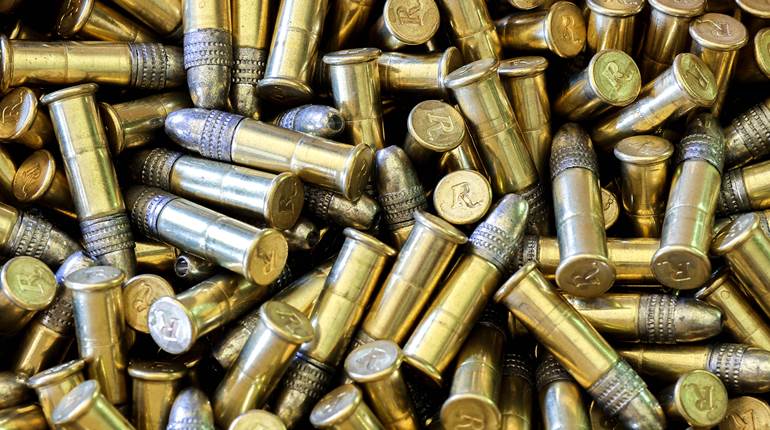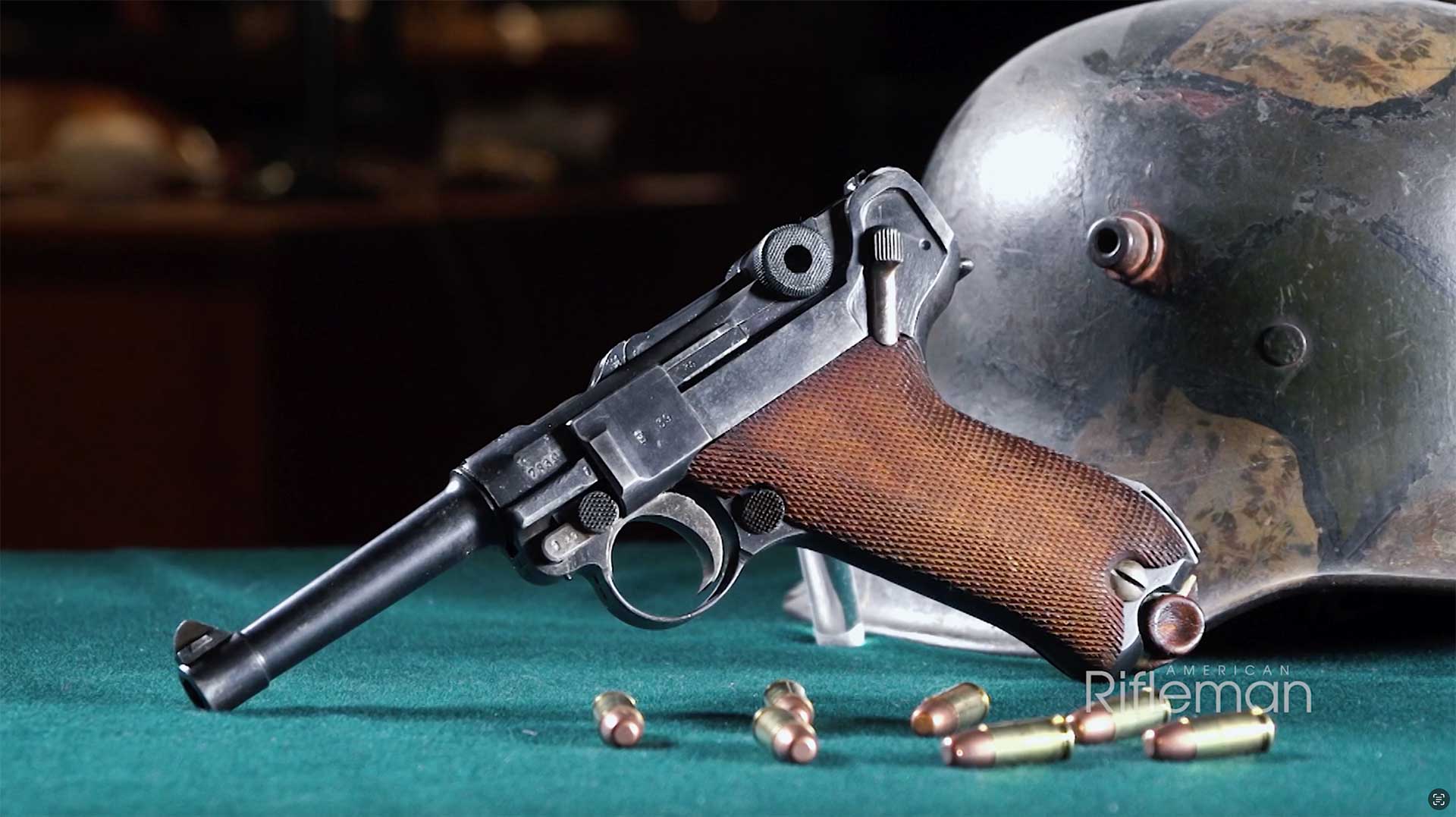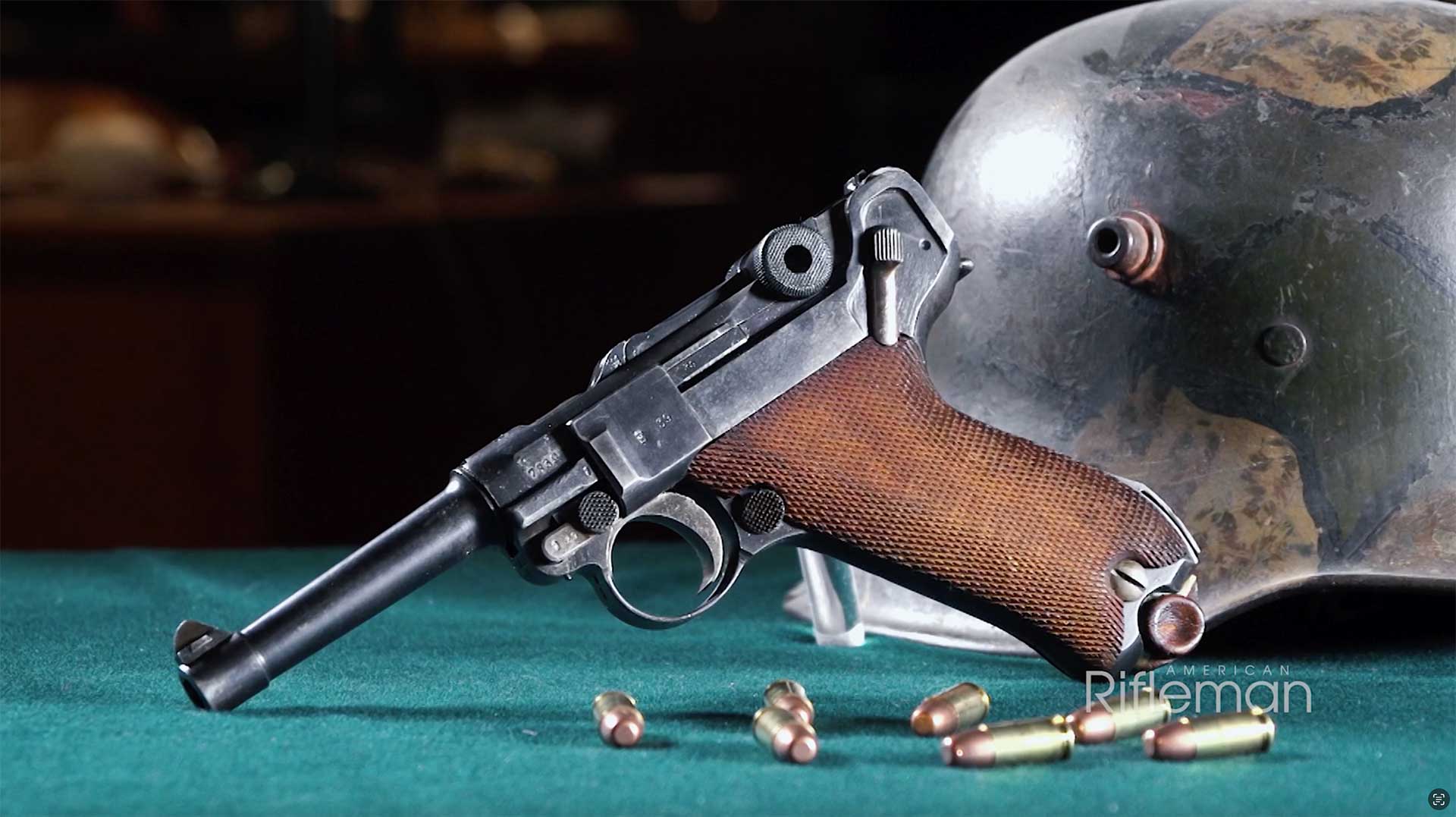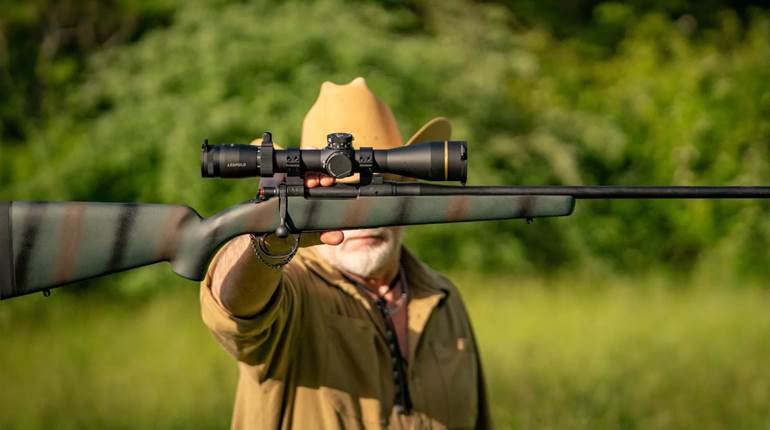
Royal Tiger Imports (RTI) turned the heads of the American military surplus rifle market in 2020 when the company announced what it had found and acquired in the Ethiopian desert. In forgotten storage facilities, literal stacks of 20th century service rifles were left abandoned and covered in dust. These arms came from a wide range of nations and time frames, all being acquired by the African nation during the reign of Emperor Haile Selassie as a means of national defense.
Since the end of his reign, these arms sat, largely forgotten, in their warehouses, collecting dust and providing a playground for goats, until RTI struck a deal with the Ethiopian government to import these arms into the States. Included in this lost trove of hardware were many well-known and celebrated models of rifles, from Mausers to Lee-Enfields and even M1 carbines, much to the excitement of the U.S. market. What was especially exciting of this find was not only the fact that it added some final bright rays to the twilight period of military surplus imports, but many of these arms were largely unmolested, with some having sat in the storage warehouses for the better portion of a century.
 A right-side view of the 1918 Remington produced U.S. Model 1917 rifle as received from Royal Tiger Imports.
A right-side view of the 1918 Remington produced U.S. Model 1917 rifle as received from Royal Tiger Imports.
 A left-side view of the 1918 Remington produced U.S. Model 1917 rifle as received from Royal Tiger Imports.
A left-side view of the 1918 Remington produced U.S. Model 1917 rifle as received from Royal Tiger Imports.
When American Rifleman Executive Editor Evan Brune took a closer look at one of the RTI M1 carbines to evaluate its overall condition, parts makeup and function, things were better than expected. Despite the wear and tear on the exterior surfaces expected from an old surplus rifle that had sat for decades unattended in the desert air, the internals proved to be in great functional shape.
As a bonus, the carbines obtained by RTI contained a mix of sought-after manufacturers, with some having gone through a post-World War II rebuild, while others retained their original World War II era parts. Yet, there were more American arms in this leftover stockpile than just M1 carbines. There were also M1 Garands, along with U.S. Model 1917 rifles. RTI provided one of these Model 1917 rifles for evaluation.
A Brief History Of The Model 1917
Of all the U.S. service rifles used during the 20th century, the bolt-action Model 1917 rifle is one of the most unsung. Its place in the minds of many is largely overshadowed by other classic rifles of the era, most notably the Model 1903 and John C. Garand’s M1. Yet despite the lack of appropriate fanfare, the Model 1917 played a critical role during World War I and was one of the best bolt-action rifles of its era.
Even though the Model 1917 was a U.S. service rifle, its design origins came from Britain. During the Boer Wars in South Africa in the late 19th century, the British forces, armed with the relatively new and modern Lee-Metford rifles, squared off against Boer settlers armed with, among other things, Model 1893 and latter style Mauser bolt-action rifles.
 A closer look at the Model 1917 action with the bolt open and the rear sight ladder raised.
A closer look at the Model 1917 action with the bolt open and the rear sight ladder raised.
This was a time when the Mauser action design was coming into its own, and very quickly, the rest of the world began to pay attention. In a manner similar to how the U.S. reacted to the experience of coming up against the Mauser during the Spanish-American War, the British were shocked at the efficiency of the Mauser action in the hands of the Boers. Of all the lessons that the British took away from the experience of the Boer War, one of them was the impression that the Mauser action was far superior to the Lee action.
Thus, similarly to the development of the Model 1903 rifle in the U.S., the British began to develop their own Mauser-based rifle design to replace the Lee designs. The ordnance factory in Enfield Lock, Great Britain, was tasked with developing the new rifle. The new design incorporated most all of the features from a Mauer 98 action, with a long-claw extractor and two locking lugs at the front of the bolt. The end result was a Mauser-looking rifle with an English styling and a profile unique to itself.
Called the Pattern 14 rifle, the British had the project fully developed and were on the brink of adopting it as a replacement for the Short Magazine Lee-Enfield (SMLE) family, when World War I erupted in 1914. The onset of the war forced the British to stick with the SMLE as its main service rifle throughout the war. Despite this, the British had contracted the American-based manufacturers Remington, Eddystone and Winchester to produce the Pattern 14 in the United States.
 A few of several proof marks stamped into the stock of the Model 1917. The bottom mark appears to be an American eagle with an "A" underneath.
A few of several proof marks stamped into the stock of the Model 1917. The bottom mark appears to be an American eagle with an "A" underneath.
As entry into the war began to loom for the U.S. in 1917, U.S. Ordnance faced a dire problem. The production of Model 1903 rifles at Springfield Armory and Rock Island Arsenal had not turned out the numbers needed to adequately arm the American Expeditionary Force (AEF). In response to this crisis, and with the pre-existing Pattern 14 domestic production lines sitting still, the decision was made to adopt the British rifle, re-chambered from .303 British to .30-’06 Sprg., as the U.S. Model of 1917 rifle. The private manufacturers could produce the Model 1917 faster and in greater quantities than the U.S. arsenals could produce the Model 1903, and as a result, far more Model 1917 rifles were used by the "Doughboys" than the Model 1903.
After the war, U.S. Ordnance chose to stick with the domestically designed Model 1903 as the standard service rifle over the Model 1917, relegating it to guard, reserve and training purposes. During the war, more than two million Model 1917s were produced, leaving a massive surplus of these reserve rifles in U.S. stockpiles afterward. Some were sold or sent abroad as aid to other nations, others continued to see guard and reserve service in the U.S. up to the end of World War II. Despite being made in larger numbers, and having carried the fight during World War I more than the Model 1903, the Model 1917 was largely overshadowed and forgotten.
An Initial Examination
Initial impressions of the Model 1917 from RTI were roughly as expected, with the exterior showing abundant wear and handling marks. There was also a mix of dust, and even some flakes of what appeared to be orange paint collected in the nooks. Despite numerous gouges on the stock and hand guards, they look to be largely intact. The wood also isn’t dried out, despite the climate where it was stored. The stock doesn’t show any signs of sanding, and the finger-grasping grooves remain prominent and well defined.
 A closer look at the finger grooves in the stock, which remain crisp despite the wear.
A closer look at the finger grooves in the stock, which remain crisp despite the wear.
 A close up view of the hairline crack in the stock just behind the receiver tag. This sort of crack could grow into a split during further use, so care must be taken to ensure that the tang does not sit against the back shoulder and encourage more splitting.
A close up view of the hairline crack in the stock just behind the receiver tag. This sort of crack could grow into a split during further use, so care must be taken to ensure that the tang does not sit against the back shoulder and encourage more splitting.
Fit was also good, with the hand guards not displaying any movement, and the fore-end putting proper upward pressure against the barrel at the front. The only real defects uncovered were a small crack on the rear-left side of the rear hand guard, and another in the stock just behind the receiver tang. The last crack being the most concerning, as it can grow as a result of additional firing. However, the tang was not making contact with the back of its recess, reducing the risk of the stock cracking open further during a test fire. The metal components display a decent amount of finish loss and some spots of surface rust, but was largely intact with surviving finish.
The bolt handle has a noticeable amount of wear, and the outer surfaces retained some spray paint that was applied at some point in its history. This specific Model 1917 was made by Remington, which made the least out of the three private firms to produce the rifle during World War I. Based off of the serial number, S/N: 267,795, this rifle was made by Remington around June of 1918, less than half a year before World War I ended. One thing that its barrel lacks, in comparison to the barrels on Model 1903 rifles of the period, is a date stamped into the top behind the front sight.
 A close-up view of the marking on top of the barrel behind the front sight, along with the dirt and orange spray paint chips that seemed to fill most of the tight spaces across the rifle.
A close-up view of the marking on top of the barrel behind the front sight, along with the dirt and orange spray paint chips that seemed to fill most of the tight spaces across the rifle.
 A close-up of the largely faded and worn away inspector's cartouche, it can barely be made out to read "BGM-K" in the right lighting.
A close-up of the largely faded and worn away inspector's cartouche, it can barely be made out to read "BGM-K" in the right lighting.
This Model 1917 rifle only has the markings of “JA” over a flaming bomb in that spot. Looking over the exterior of the stock revealed several surviving proofs, including the remnants of an inspector’s cartouche on the left side, which appears to read “BGM-K” inside the box. Interestingly, there does not appear to be any additional proofs from a rebuild, which might indicate that this rifle was sent to Ethiopia in the inter-war period when it was still relatively new.
A Deeper Look
Going further, the rifle was completely disassembled to get an idea of what the was underneath. After carefully loosening the screws and taking the barreled action out of the stock, it was revealed that the condition of the metal and wood was in surprisingly great shape. The barrel, receiver and other metal parts shielded by the wood retained essentially all of its original 100-year-old finish, looking almost new. After wiping down the metal with cleaning solution and applying some Ballistol, the external metal finish looked much better, with darker spots on the front and rear of the receiver indicating where the heat treatment took place.
 The Model 1917 disassembled, note how areas of the metal that were covered by the hand guard and stock retain nearly all of their original finish.
The Model 1917 disassembled, note how areas of the metal that were covered by the hand guard and stock retain nearly all of their original finish.
Next came time to inspect the bore. Initially, it appeared as though there was pitting in the bore, with little shine or definition with the walls covered in dirt. The bore was cleaned out extensively with solvent, a bore brush and some elbow grease to get the crud out, resulting in a black sludge-covered patch on the first push through. After several passes with the brush and patches, the end result was better than expected. Cleaned out, the bore was in fantastic shape, with well-defined lands and grooves along with plenty of shine.
 A close-up view of the disassembled ejector and bolt release assembly. Note the small tab on the bottom of the ejector where the integral leaf spring used to be.
A close-up view of the disassembled ejector and bolt release assembly. Note the small tab on the bottom of the ejector where the integral leaf spring used to be.
All of the metal parts were in working order, except for the ejector, which did not have any spring tension against it. Upon taking apart the ejector assembly, it was discovered that the integral leaf spring had snapped off of the ejector at some point. This was apparently a common issue with the Model 1917, with the suggested fix being the modification of the ejector to hold a coil spring instead.
Range Test:
Before attempting a test fire, the bolt was checked for headspace to ensure it was safe to fire. While no serial number could be found on the bolt matching it to the action, the bolt headspaced right where it should, passing the go-gauge and failing to completely close on the no-go. With that, it was time to test out the Model 1917 to see if it retained accuracy. Ammunition selected for the test included commercial Barnaul steel-cased 168-grain and Remington Core-Lokt 180-grain, along with some Greek HXP 152-grain M2 Ball surplus .30-’06 Sprg. cartridges, shooting five-round groups.
 The bore prior to cleaning did not seem like it would have a lot of promise, with perhaps some pitting and wear.
The bore prior to cleaning did not seem like it would have a lot of promise, with perhaps some pitting and wear.
 With the grime brushed and patched out, the bore looked far better than expected.
With the grime brushed and patched out, the bore looked far better than expected.
The rifle was test fired off a bench at 50 yards to get a rough idea of accuracy and sight settings. After firing all three loadings using the fixed battle sight, the results were mixed. The shots landed between 5” to 6” above the point of aim, which was expected while using the battle sight. However, they consistently landed roughly 3” to 5” to the right at that distance, indicating that the windage would need an adjustment to hit targets further out without having to use a substantial holdover.
The sights of the Model 1917 lack a windage adjustment feature, aside from a dovetailed front sight post which was staked in place at the factory. This makes the prospect of careful windage adjustments on the Model 1917 difficult without the proper jig. Despite that the groupings were promising, with the HXP M2 surplus and Remington Core-Lokt loading making just over 1.5” five-shot groups within 2” of each other vertically. The Barnaul steel-cased 168-grain loading produced a pattern roughly 3” in diameter in comparison, but landed in roughly the same area.
 Testing out the 1918 Remington Model 1917 from RTI on the 50 yard NRA Publications range using modern .30-'06 Sprg. loadings from Barnaul and Remington, along with Greek HXP M2 Ball military surplus ammunition.
Testing out the 1918 Remington Model 1917 from RTI on the 50 yard NRA Publications range using modern .30-'06 Sprg. loadings from Barnaul and Remington, along with Greek HXP M2 Ball military surplus ammunition.
The two-stage trigger worked well for a standard-issue trigger, without too much creep. The fired casings were also easy to extract, with the brass showing very little signs of fire-forming. The bolt was also very easy to manipulate, with quintessentially Mauser-like authoritative operation. Besides the need for a new ejector spring and a windage adjustment, this Model 1917 performed well, and the crack behind the receiver tang in the stock had not grown during the test fire upon inspection afterward.
Conclusions:
While there is no real shortage of Model 1917 rifles to be found in the U.S. market already, the rifles offered by RTI are serviceable and come with an interesting history. Its not very often that one can purchase a military surplus rifle that be can definitively traced to where it was sourced, let alone having spent the last half of the 20th century in Africa. They are also arms that played a role global politics, stockpiled to insure Ethiopia's independence from would-be colonizers.
 A right-side view of the Model 1917 after getting a deep clean and oiling.
A right-side view of the Model 1917 after getting a deep clean and oiling.
 A left-side view of the Model 1917 after getting a deep clean and oiling.
A left-side view of the Model 1917 after getting a deep clean and oiling.
Yet, it's more than that. Many of these arms, like the Model 1917 Enfields, have not undergone extensive rebuilds and refurbishments as is often the case with other U.S. military surplus rifles in today's market. They remain the way they were sent over, and untimely found, often with old original parts which would command a premium from collectors in today's market. With the end of the military-surplus arms import era nigh, Royal Tiger Imports is one of the few places where one can find a truly unique piece of history.













